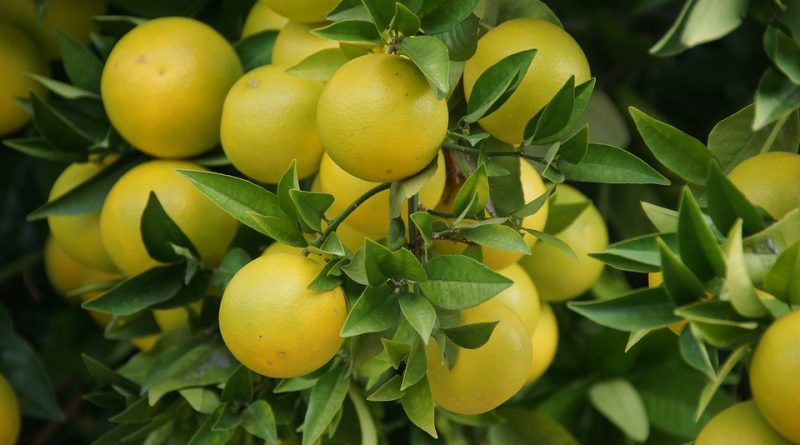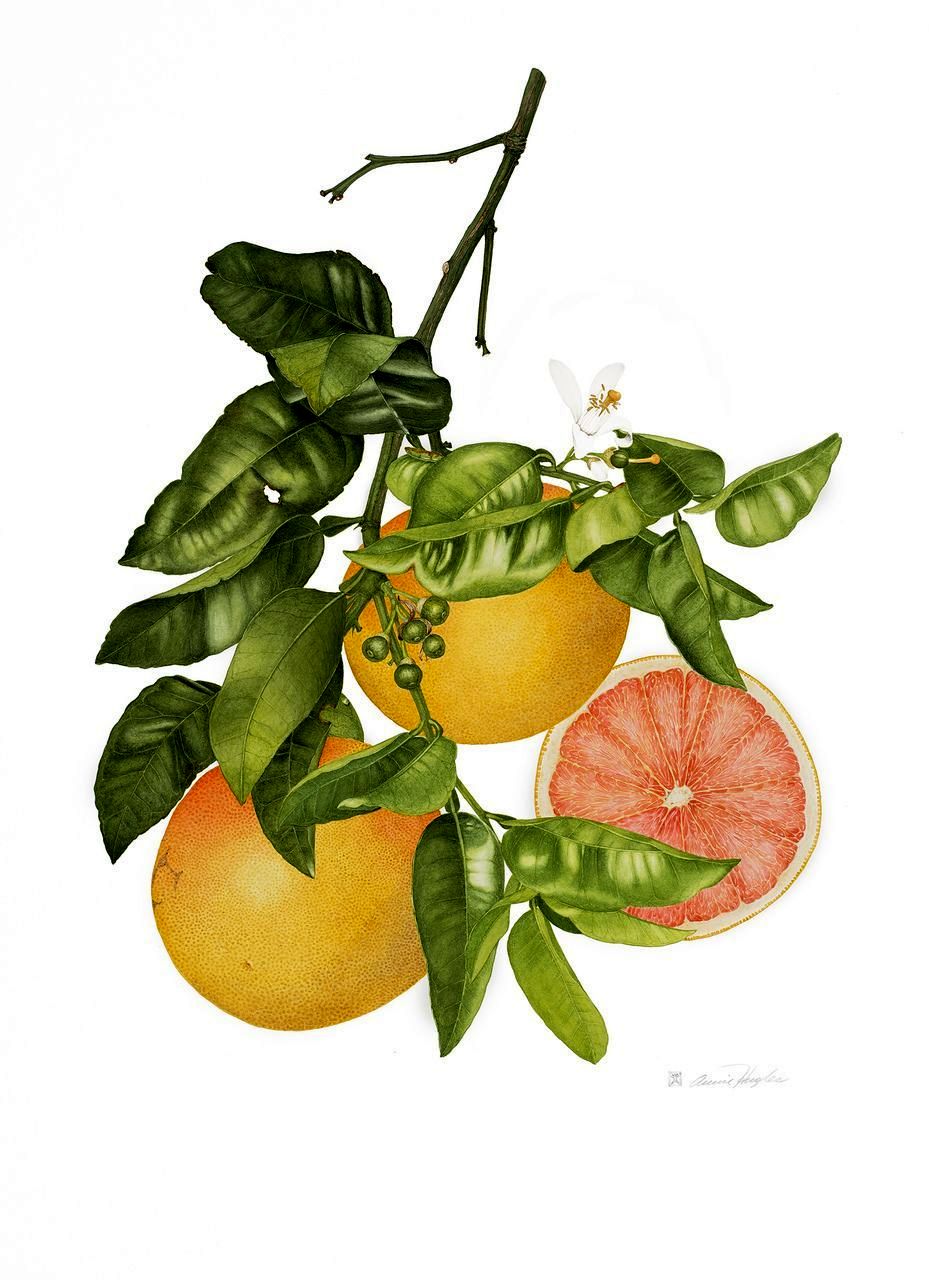Citrus paradisi
Citrus paradisi
Grapefruit (Citrus paradisi Macfad., 1830) is a fruit tree of the Rutaceae family and of the genus Citrus.
Systematics –
From the systematic point of view it belongs to the Domain Eukaryota, Kingdom Plantae, Magnoliophyta Division, Magnoliopsida Class, Sottoclasse Rosidae, Order Sapindales, Family Rutaceae, Subfamily Aurantioideae, Tribe Citreae and then to the Genus Citrus and to the Specie C. paradisi.
Etymology –
The term Citrus was the Latin name of cedar and lemon, from Greek greek κέδρος kédros, cedar and κίτρον kítron, lemon. The specific epithet derives from Paradise, genitive of the Latin ecclesiastico paradisus, referring to the goodness of the fruits, worthy of paradise.
Geographic Distribution and Habitat –
The origin of grapefruit is uncertain. It is supposed that it does not come from South-East Asia, but from Central America (Barbados or Bahamas) but it becomes difficult to demonstrate how it could reach the Mediterranean Sea from there; The hypothesis that he came to Europe together with his ancestor, the sweet orange, from the Far East through Asia to the Silk Road, is more similar. Today grapefruit is grown in all countries with a temperate climate.
Description –
The Citrus paradisi is an ancient hybrid, probably between the sweet orange and the pomelo, but for centuries it is now an autonomous species. Grapefruit is a very vigorous plant, which can reach 12 meters in height, with a rounded shape and dense foliage. It has dark-green ovate leaves, with winged petioles and a flexible spine at the axilla. The flowers are large, generally in axillary inflorescences (hence the English “grapefruit”, that is, fruits gathered in clusters). It has fruits with a juicy, bitter-acidulous pulp, yellow in color, or pink-red according to the variety. The seeds are white and polyembryonic.
Grapefruit is classified commercially based on:
– maturation period (early, mid-season and late);
– color of the pulp (light or pigmented);
– presence of seeds: with seeds or apireni.
The common name grapefruit can refer both to fruit and to its tree.
Cultivation –
Today grapefruit is grown practically all over the world and the major producers are the USA, (Florida and Texas). In Southern Italy especially in the Catania Plain, and in the Conca d’Oro of Palermo, in Sicily. For the cultivation technique you can consult the following form.
Customs and Traditions –
Grapefruit has been grown in Europe for a long time only as an ornamental plant. The fruit became popular and therefore only grown in intensive plants in the 19th century.
Grapefruit is the only citrus that is believed to come not from Southeast Asia, but from Central America. Some authors believe it was discovered in 1750, probably in Barbados or the Bahamas. In reality it is plausible that from these areas it was brought to Florida, however it is quite unlikely that from there it could also reach the Mediterranean Sea. There are no certain data on this, but there is the hypothesis that grapefruit also arrived in Europe together with its ancestor, sweet orange, from the Far East through Asia along the Silk Road, which would place the its origin in the homeland of all other citrus fruits. However, it is true that in Europe it had long been used only as an ornamental plant. The fruit only became popular in the 19th century.
Today grapefruit is grown all over the world. The major producers are the USA, with plantations in Florida and Texas.
In southern Italy, it is cultivated today in the citrus groves of the Piana di Catania, and of the Conca d’Oro in Sicily.
In addition to food uses such as fresh fruit, juices, drinks, etc. some studies show important antifungal, antimicrobial and antibacterial properties of broad spectrum GSE (Grapefruit-Seed Extract).
In the last thirty years, through various studies, it has been noted, however, that in countries where the consumption of grapefruit juice is high (with quantities of even 4-8 liters per day) there was negative interference of this drink on some drug therapies. For this reason, the studies that have led to clarify the enzymatic mechanisms of action have been deepened and, therefore, it is always good to have a preventive medical consultation, for those who use certain drugs, in the intake of grapefruit juice-based drinks. .
Preparation Mode –
The Citrus paradisi is a fruit used both fresh and in juices, juices or drinks. Its use in recent times, which is expanding, has also extended to recipes that include dishes for appetizers, condiments and in pastry.
Guido Bissanti
Sources
– Wikipedia, the free encyclopedia.
– Treben M., 2000. Health from the Pharmacy of the Lord, Advice and experience with medicinal herbs, Ennsthaler Publisher
– Pignatti S., 1982. Flora of Italy, Edagricole, Bologna.
– Conti F., Abbate G., Alessandrini A., Blasi C. (edited by), 2005. An annotated checklist of the Italian vascular flora, Palombi Editore.
Warning: Pharmaceutical applications and alimurgical uses are indicated for informational purposes only and do not in any way represent a medical prescription; there is therefore no liability for their use for curative, aesthetic or food purposes.


